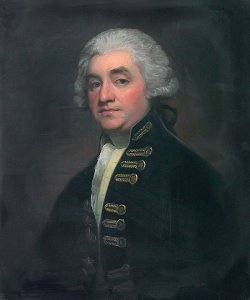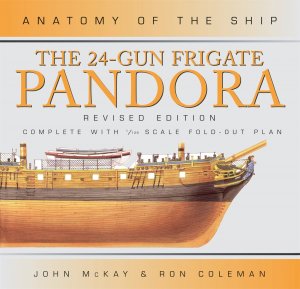Today in Naval History - Naval / Maritime Events in History
1st of May
some of the events you will find here,
please use the following link where you will find more details and all other events of this day .....
1730 – Birth of Joshua Rowley, English admiral (d. 1790)
Vice-Admiral Sir Joshua Rowley, 1st Baronet (1734–1790) was the fourth son of Admiral Sir William Rowley. Sir Joshua was from an ancient English family, originating in Staffordshire (England) and was born on 1 May 1734 in Dublin Rowley served with distinction in a number of battles throughout his career and was highly praised by his contemporaries. Unfortunately whilst his career was often active he did not have the opportunity to command any significant engagements and always followed rather than led. His achievements have therefore been eclipsed by his contemporaries such as Keppel, Hawke, Howe and Rodney. Rowley however remains one of the stalwart commanders of the wooden walls that kept Britain safe for so long.

1751 – Launch of HMS Dolphin, a 24-gun sixth-rate frigate of the Royal Navy.
HMS Dolphin was a 24-gun sixth-rate frigate of the Royal Navy. Launched in 1751, she was used as a survey ship from 1764 and made two circumnavigations of the world under the successive commands of John Byron and Samuel Wallis. She was the first ship to circumnavigate the world twice. She remained in service until she was paid off in September 1776, and she was broken up in early 1777.

1781 - Action of 1 May 1781 - HMS Canada captures the Spanish frigate Santa Leocadia
The Action of 1 May 1781 was a minor naval engagement nearly 210 miles off the Port of Brest in which HMS Canada, a 74-gun third rate of the Royal Navy under Captain George Collier chased, intercepted and captured the 40-gun Spanish frigate Santa Leocadia, captained by Don Francisco de Wenthuisen.

Scale: 1:48. Plan showing the body plan with stern board decoration for Canada (1765), a 74-gun Third Rate, two-decker
1795 - HMS Boyne (98), bearing the flag of Vice-Admiral Peyton, Cptn. George Grey, caught fire at Spithead burned and exploded.
HMS Boyne was a 98-gun Royal Navy second-rate ship of the line launched on 27 June 1790 at Woolwich. She was the flagship of Vice Admiral John Jervis in 1794.

1804 – Launch of HMS Royal Sovereign, the Royal Yacht of British King George III.
HMS Royal Sovereign was the Royal Yacht of British King George III.

The embarkation of his most Gracious Majesty George the Fourth at Greenwich, August 10th, 1822 for Scotland

This is a model of HMS Royal Sovereign that was launched in 1804 under the reign of King George III. The model was built ca. 1804 and is made of boxwood and fruitwood. The deck comes off and the interior is very lavish with carpet, fabric wall coverings, paintings, embellished furniture and little figurines in period dress. The model is currently in the collection at The Mariners' Museum.

This painting by an unknown artist is an illustration of George IV's visit to Greenwich. The royal yacht can be seen in the centre with another sailing ship to the left, surrounded by smaller rowing boats carrying passengers. The image has also been described as a visit of George III, on 30th October 1797, and William IV, in August 1830. The picture’s stylistic rendering exemplifies the lasting influence Dutch 17th-century painting had on British maritime art until the early 19th century
1813 – Launch of French Piet Hein, a Téméraire-class 74-gun ship of the line of the French Navy
Piet Hein, was one of the ships built in the various shipyards captured by the First French Empire in Holland and Italy in a crash programme to replenish the ranks of the French Navy. She was built in Rotterdam under supervision of engineer Alexandre Notaire-Granville, following plans by Sané and using timber taken from the 80-gun Piet Hein, taken apart while still on keel.
Royal Italien was surrendered to Holland at the fall of Rotterdam in December 1813. She was renamed Admiraal Piet Hein, and eventually broken up in 1819.

Scale model of Achille, sister ship of French ship Piet Hein (1813), on display at the Musée de la Marine in Paris.
1813 – Launch of HMS Anacreon, which had an extremely brief career. she was commissioned in early 1813 and was lost within a year

1851 - Launch of clipper Syren, the longest lived of all the clipper ships
Syren was the longest lived of all the clipper ships, with a sailing life of 68 years 7 months. She sailed in the San Francisco trade, in the Far East, and transported whaling products from Hawaii and the Arctic to New Bedford.

1898 - Battle of Manila Bay - The American squadron, commanded by Commodore George Dewey, defeats the Spanish squadron under the command of Rear Adm. Montojo at Manila Bay, Philippines.
The Battle of Manila Bay (Filipino: Labanan sa Look ng Maynila Spanish: Batalla de Bahía de Manila), also known as the Battle of Cavite, took place on 1 May 1898, during the Spanish–American War. The American Asiatic Squadron under Commodore George Dewey engaged and destroyed the Spanish Pacific Squadron under Contraalmirante (Rear admiral) Patricio Montojo. The battle took place in Manila Bay in the Philippines, and was the first major engagement of the Spanish–American War. The battle was one of the most decisive naval battles in history and marked the end of the Spanish colonial period in Philippine history.

Contemporary colored print, showing USS Olympia in the left foreground, leading the U.S. Asiatic Squadron against the Spanish fleet off Cavite. A vignette portrait of Rear Admiral George Dewey is featured in the lower left.
1911 – Launch of HMS Conqueror, the third of four Orion-class dreadnought battleships built for the Royal Navy in the early 1910s.
HMS Conqueror was the third of four Orion-class dreadnought battleships built for the Royal Navy in the early 1910s. She spent the bulk of her career assigned to the Home and Grand Fleets. Aside from participating in the failed attempt to intercept the German ships that had bombarded Scarborough, Hartlepool and Whitby in late 1914, the Battle of Jutland in May 1916 and the inconclusive Action of 19 August, her service during World War I generally consisted of routine patrols and training in the North Sea.
After the Grand Fleet was dissolved in early 1919, Conqueror was transferred back to the Home Fleet for a few months before she was assigned to the Reserve Fleet. The ship was sold for scrap in late 1922 and subsequently broken up.



1915 – The RMS Lusitania departs from New York City on her 202nd, and final, crossing of the North Atlantic. Six days later, the ship is torpedoed off the coast of Ireland with the loss of 1,198 lives.
On 17 April 1915, Lusitania left Liverpool on her 201st transatlantic voyage, arriving in New York on 24 April. A group of German-Americans, hoping to avoid controversy if Lusitania was attacked by a U-boat, discussed their concerns with a representative of the German Embassy. The embassy decided to warn passengers before her next crossing not to sail aboard Lusitania. The Imperial German Embassy placed a warning advertisement in 50 American newspapers, including those in New York:
NOTICE!
TRAVELLERS intending to embark on the Atlantic voyage are reminded that a state of war exists between Germany and her allies and Great Britain and her allies; that the zone of war includes the waters adjacent to the British Isles; that, in accordance with formal notice given by the Imperial German Government, vessels flying the flag of Great Britain, or any of her allies, are liable to destruction in those waters and that travellers sailing in the war zone on the ships of Great Britain or her allies do so at their own risk.
IMPERIAL GERMAN EMBASSY
Washington, D.C., 22 April 1915.
This warning was printed adjacent to an advertisement for Lusitania's return voyage. The warning led to agitation in the press and worried some of the ship's passengers and crew. Lusitania departed Pier 54 in New York, on 1 May 1915 at 12:20 p.m. A few hours after the vessel's departure, the Saturday evening edition of The Washington Times published two articles on its front page, both referring to those warnings.

Lusitania arriving in port
1st of May
some of the events you will find here,
please use the following link where you will find more details and all other events of this day .....
Naval/Maritime History - 27th of August - Today in Naval History - Naval / Maritime Events in History
Today in Naval History - Naval / Maritime Events in History 30 April 1790 – Launch of HMS Brunswick, a 74-gun third rate ship-of-the-line of the Royal Navy, at Deptford. HMS Brunswick was a 74-gun third rate ship-of-the-line of the Royal Navy, launched on 30 April 1790 at Deptford. She was...
shipsofscale.com
1730 – Birth of Joshua Rowley, English admiral (d. 1790)
Vice-Admiral Sir Joshua Rowley, 1st Baronet (1734–1790) was the fourth son of Admiral Sir William Rowley. Sir Joshua was from an ancient English family, originating in Staffordshire (England) and was born on 1 May 1734 in Dublin Rowley served with distinction in a number of battles throughout his career and was highly praised by his contemporaries. Unfortunately whilst his career was often active he did not have the opportunity to command any significant engagements and always followed rather than led. His achievements have therefore been eclipsed by his contemporaries such as Keppel, Hawke, Howe and Rodney. Rowley however remains one of the stalwart commanders of the wooden walls that kept Britain safe for so long.

1751 – Launch of HMS Dolphin, a 24-gun sixth-rate frigate of the Royal Navy.
HMS Dolphin was a 24-gun sixth-rate frigate of the Royal Navy. Launched in 1751, she was used as a survey ship from 1764 and made two circumnavigations of the world under the successive commands of John Byron and Samuel Wallis. She was the first ship to circumnavigate the world twice. She remained in service until she was paid off in September 1776, and she was broken up in early 1777.
1781 - Action of 1 May 1781 - HMS Canada captures the Spanish frigate Santa Leocadia
The Action of 1 May 1781 was a minor naval engagement nearly 210 miles off the Port of Brest in which HMS Canada, a 74-gun third rate of the Royal Navy under Captain George Collier chased, intercepted and captured the 40-gun Spanish frigate Santa Leocadia, captained by Don Francisco de Wenthuisen.
Scale: 1:48. Plan showing the body plan with stern board decoration for Canada (1765), a 74-gun Third Rate, two-decker
1795 - HMS Boyne (98), bearing the flag of Vice-Admiral Peyton, Cptn. George Grey, caught fire at Spithead burned and exploded.
HMS Boyne was a 98-gun Royal Navy second-rate ship of the line launched on 27 June 1790 at Woolwich. She was the flagship of Vice Admiral John Jervis in 1794.
1804 – Launch of HMS Royal Sovereign, the Royal Yacht of British King George III.
HMS Royal Sovereign was the Royal Yacht of British King George III.
The embarkation of his most Gracious Majesty George the Fourth at Greenwich, August 10th, 1822 for Scotland
This is a model of HMS Royal Sovereign that was launched in 1804 under the reign of King George III. The model was built ca. 1804 and is made of boxwood and fruitwood. The deck comes off and the interior is very lavish with carpet, fabric wall coverings, paintings, embellished furniture and little figurines in period dress. The model is currently in the collection at The Mariners' Museum.
This painting by an unknown artist is an illustration of George IV's visit to Greenwich. The royal yacht can be seen in the centre with another sailing ship to the left, surrounded by smaller rowing boats carrying passengers. The image has also been described as a visit of George III, on 30th October 1797, and William IV, in August 1830. The picture’s stylistic rendering exemplifies the lasting influence Dutch 17th-century painting had on British maritime art until the early 19th century
1813 – Launch of French Piet Hein, a Téméraire-class 74-gun ship of the line of the French Navy
Piet Hein, was one of the ships built in the various shipyards captured by the First French Empire in Holland and Italy in a crash programme to replenish the ranks of the French Navy. She was built in Rotterdam under supervision of engineer Alexandre Notaire-Granville, following plans by Sané and using timber taken from the 80-gun Piet Hein, taken apart while still on keel.
Royal Italien was surrendered to Holland at the fall of Rotterdam in December 1813. She was renamed Admiraal Piet Hein, and eventually broken up in 1819.
Scale model of Achille, sister ship of French ship Piet Hein (1813), on display at the Musée de la Marine in Paris.
1813 – Launch of HMS Anacreon, which had an extremely brief career. she was commissioned in early 1813 and was lost within a year
1851 - Launch of clipper Syren, the longest lived of all the clipper ships
Syren was the longest lived of all the clipper ships, with a sailing life of 68 years 7 months. She sailed in the San Francisco trade, in the Far East, and transported whaling products from Hawaii and the Arctic to New Bedford.
1898 - Battle of Manila Bay - The American squadron, commanded by Commodore George Dewey, defeats the Spanish squadron under the command of Rear Adm. Montojo at Manila Bay, Philippines.
The Battle of Manila Bay (Filipino: Labanan sa Look ng Maynila Spanish: Batalla de Bahía de Manila), also known as the Battle of Cavite, took place on 1 May 1898, during the Spanish–American War. The American Asiatic Squadron under Commodore George Dewey engaged and destroyed the Spanish Pacific Squadron under Contraalmirante (Rear admiral) Patricio Montojo. The battle took place in Manila Bay in the Philippines, and was the first major engagement of the Spanish–American War. The battle was one of the most decisive naval battles in history and marked the end of the Spanish colonial period in Philippine history.
Contemporary colored print, showing USS Olympia in the left foreground, leading the U.S. Asiatic Squadron against the Spanish fleet off Cavite. A vignette portrait of Rear Admiral George Dewey is featured in the lower left.
1911 – Launch of HMS Conqueror, the third of four Orion-class dreadnought battleships built for the Royal Navy in the early 1910s.
HMS Conqueror was the third of four Orion-class dreadnought battleships built for the Royal Navy in the early 1910s. She spent the bulk of her career assigned to the Home and Grand Fleets. Aside from participating in the failed attempt to intercept the German ships that had bombarded Scarborough, Hartlepool and Whitby in late 1914, the Battle of Jutland in May 1916 and the inconclusive Action of 19 August, her service during World War I generally consisted of routine patrols and training in the North Sea.
After the Grand Fleet was dissolved in early 1919, Conqueror was transferred back to the Home Fleet for a few months before she was assigned to the Reserve Fleet. The ship was sold for scrap in late 1922 and subsequently broken up.
1915 – The RMS Lusitania departs from New York City on her 202nd, and final, crossing of the North Atlantic. Six days later, the ship is torpedoed off the coast of Ireland with the loss of 1,198 lives.
On 17 April 1915, Lusitania left Liverpool on her 201st transatlantic voyage, arriving in New York on 24 April. A group of German-Americans, hoping to avoid controversy if Lusitania was attacked by a U-boat, discussed their concerns with a representative of the German Embassy. The embassy decided to warn passengers before her next crossing not to sail aboard Lusitania. The Imperial German Embassy placed a warning advertisement in 50 American newspapers, including those in New York:
NOTICE!
TRAVELLERS intending to embark on the Atlantic voyage are reminded that a state of war exists between Germany and her allies and Great Britain and her allies; that the zone of war includes the waters adjacent to the British Isles; that, in accordance with formal notice given by the Imperial German Government, vessels flying the flag of Great Britain, or any of her allies, are liable to destruction in those waters and that travellers sailing in the war zone on the ships of Great Britain or her allies do so at their own risk.
IMPERIAL GERMAN EMBASSY
Washington, D.C., 22 April 1915.
This warning was printed adjacent to an advertisement for Lusitania's return voyage. The warning led to agitation in the press and worried some of the ship's passengers and crew. Lusitania departed Pier 54 in New York, on 1 May 1915 at 12:20 p.m. A few hours after the vessel's departure, the Saturday evening edition of The Washington Times published two articles on its front page, both referring to those warnings.
Lusitania arriving in port



 Line
Line reel, showing the bow nearing the ground.
reel, showing the bow nearing the ground.
